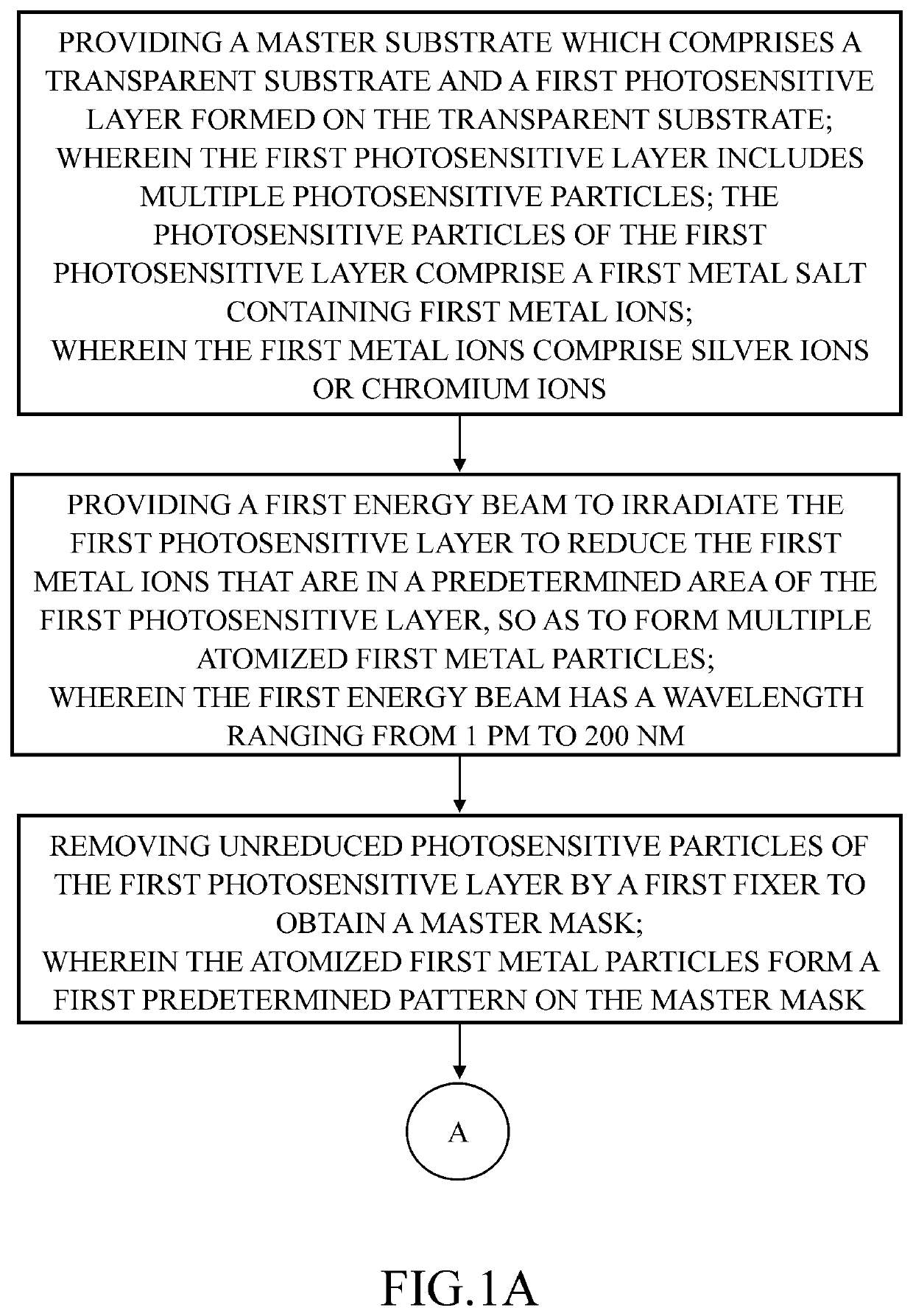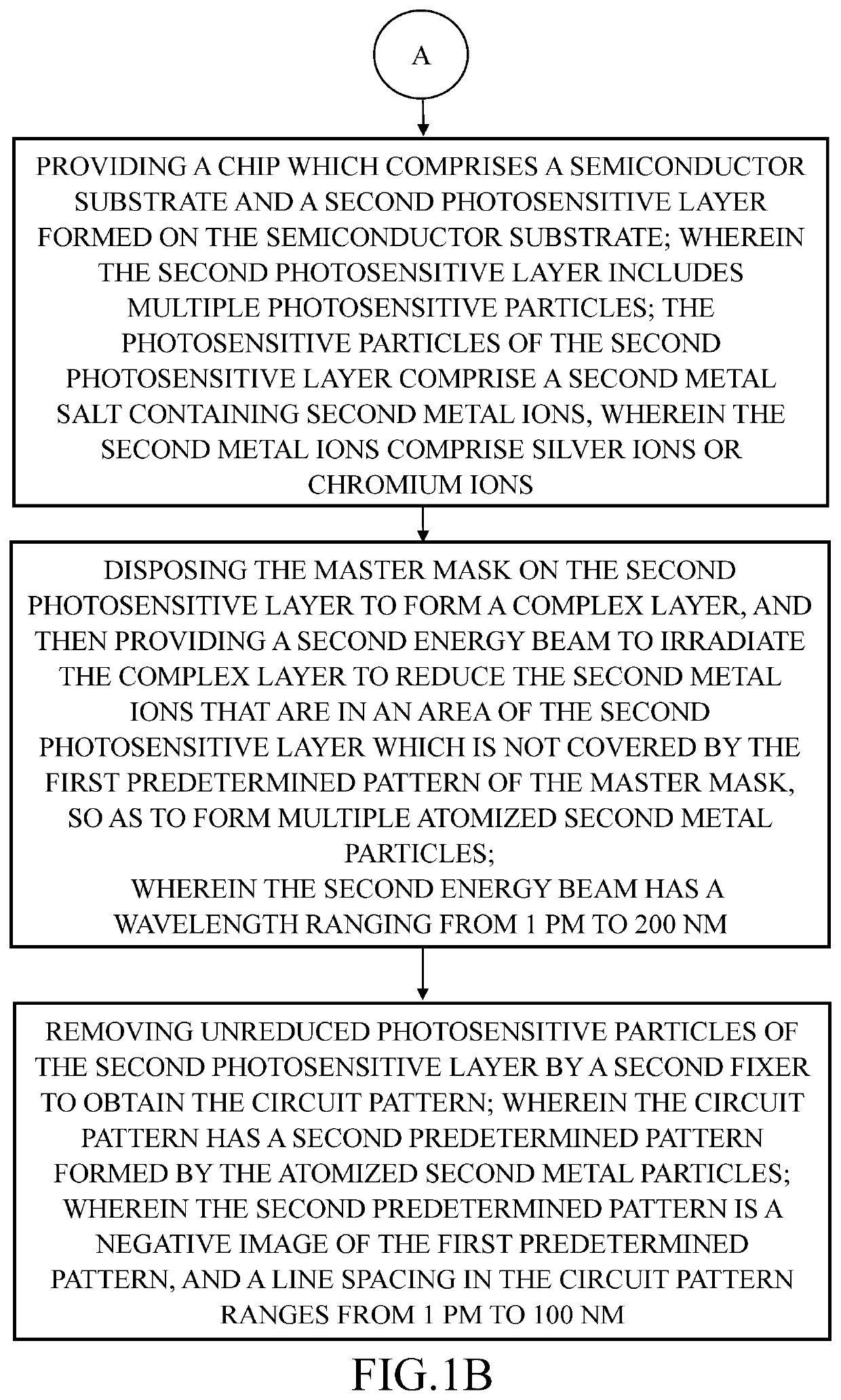Method of making a picoscopic scale/ nanoscopic scale circuit pattern
a circuit pattern and picoscopic scale technology, applied in the field of fine circuit pattern making, can solve the problems of increasing the complexity of the manufacturing process of ics, increasing the difficulty of the process and overall production cost, and approaching the technological and economic limit of conventional optical lithography
- Summary
- Abstract
- Description
- Claims
- Application Information
AI Technical Summary
Benefits of technology
Problems solved by technology
Method used
Image
Examples
example 1
Method of Making a Circuit Pattern at a Nanoscopic Scale
[0035]Preparing a Master Mask
[0036]First, a master substrate was provided. The master substrate comprised a transparent substrate and a first photosensitive layer formed on the transparent substrate; wherein the first photosensitive layer included multiple photosensitive particles; the photosensitive particles of the first photosensitive layer comprised AgBr particles as the first metal salt containing silver ions. The first photosensitive layer had an average thickness of about 70 nm, and the average particle size of the AgBr particles of the first photosensitive layer was about 50 nm.
[0037]Then, under an environment with a vacuum degree of 10−4 Pa, a first energy beam connecting with a computer system was provided. The computer system operated the emission of the first energy beam, so the first energy beam could directly depict a negative image of a desired IC pattern onto the first photosensitive layer. Accordingly, AgBr par...
example 2
Method of Making a Circuit Pattern at a Picoscopic Scale
[0045]Preparing a Master Mask
[0046]First, a master substrate was provided. The master substrate comprised a transparent substrate and a first photosensitive layer formed on the transparent substrate; wherein the first photosensitive layer included multiple photosensitive particles; the photosensitive particles of the first photosensitive layer comprised AgBr particles as the first metal salt containing silver ions. The first photosensitive layer had an average thickness of about 50 nm, and the average particle size of the AgBr particles of the first photosensitive layer was about 5 nm.
[0047]Then, under an environment with a vacuum degree of 10−7 Pa, a first energy beam connecting with a computer system was provided. The computer system operated the emission of the first energy beam, so the first energy beam could directly depict a negative image of a desired IC pattern onto the first photosensitive layer. Accordingly, AgBr part...
PUM
| Property | Measurement | Unit |
|---|---|---|
| wavelength | aaaaa | aaaaa |
| particle size | aaaaa | aaaaa |
| size | aaaaa | aaaaa |
Abstract
Description
Claims
Application Information
 Login to View More
Login to View More - R&D
- Intellectual Property
- Life Sciences
- Materials
- Tech Scout
- Unparalleled Data Quality
- Higher Quality Content
- 60% Fewer Hallucinations
Browse by: Latest US Patents, China's latest patents, Technical Efficacy Thesaurus, Application Domain, Technology Topic, Popular Technical Reports.
© 2025 PatSnap. All rights reserved.Legal|Privacy policy|Modern Slavery Act Transparency Statement|Sitemap|About US| Contact US: help@patsnap.com


